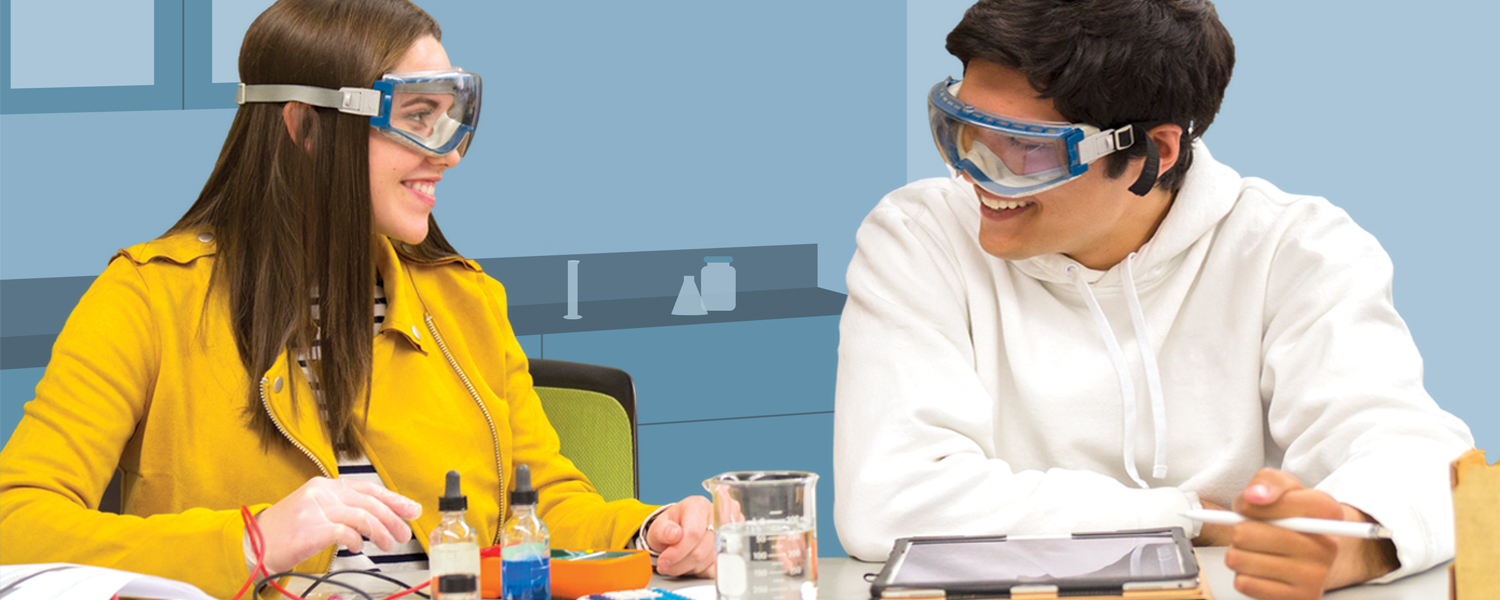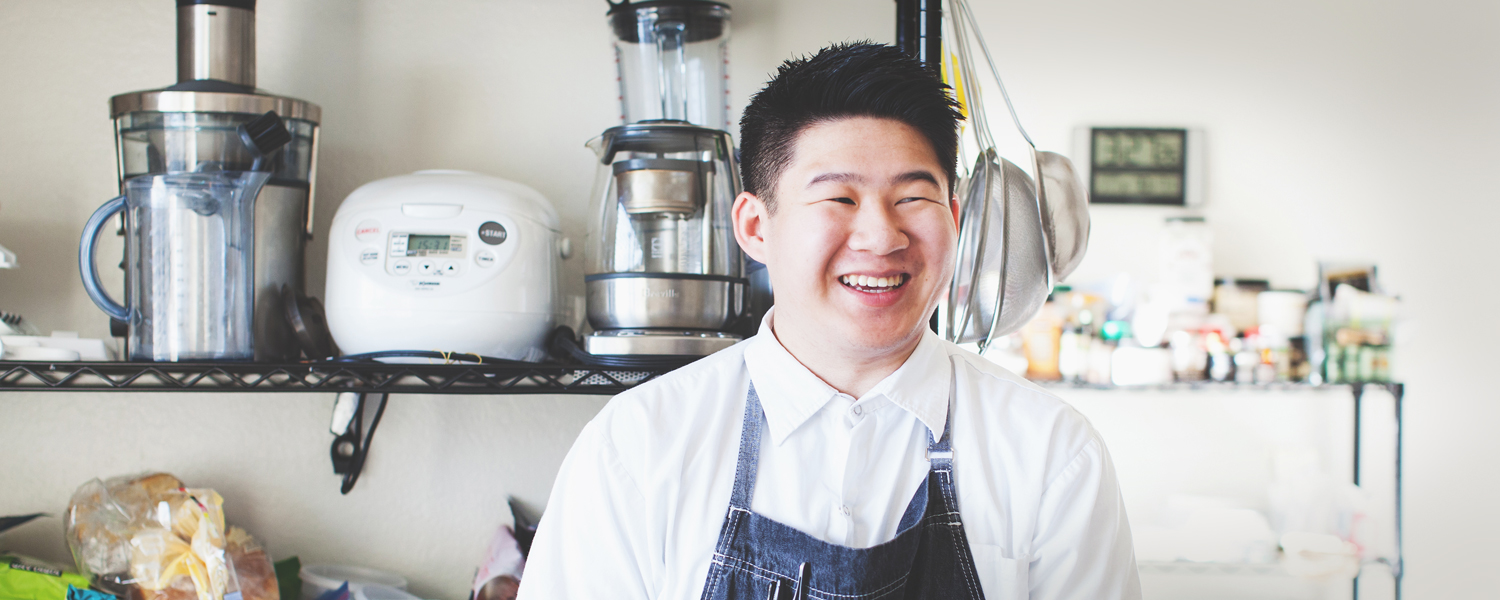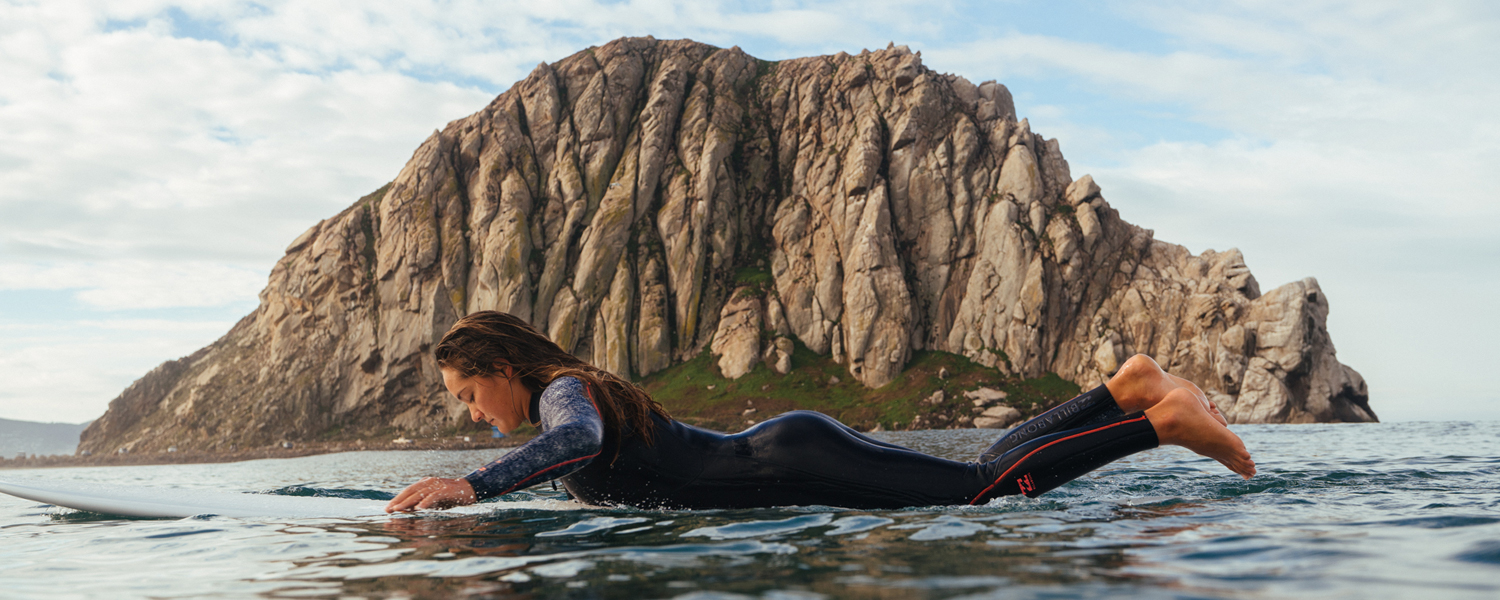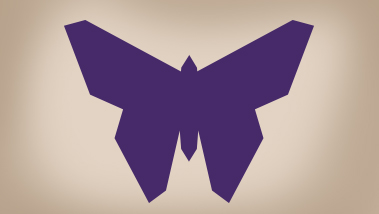featured
A Common Bond
by Robyn Kontra Tanner

Biomedical engineering students Jake Javier and Leila Murray have found friendship through a shared passion to help people like them living with spinal cord afflictions.
Under different circumstances, it’s possible biomedical engineering freshmen Jake Javier and Leila Murray may have never crossed paths.
Javier had plans to play football at Cal Poly as a preferred walk-on in 2016, but an accident diving into a swimming pool left him paralyzed from his chest down with limited use of his hands. After a year of intense physical therapy, Javier reapplied to the biomedical engineering major to leverage his new-found perspective on the rehabilitation process.
Murray always imagined she’d become a doctor or nurse after spending so much time in hospitals as a kid. She was born with spina bifida, a condition in which the spinal cord and vertebrae don’t develop properly in utero. The disease has affected the nerves in her legs and limited her mobility. Today she uses a walker to get around.
Given their histories, these two students share much more than a major. They’ve bonded over a common passion for pursuing biomedical engineering while facing life-altering spinal cord afflictions. They’re now focused on using their personal — sometimes painful — experiences to make it easier for others living with disabilities.
In just a few months on campus, Javier and Murray have gelled both as friends and as lab partners. You can often find them exchanging inside jokes while traversing Cal Poly’s notoriously hilly campus in the Disability Resource Center (DRC) vans.
Their similar sense of humor was on full display when Cal Poly Magazine caught up with them on a sunny day in the University Union.
“I’m the brains, and she’s the brawn,” Javier quips sarcastically. “She does all the work with the hands and stuff, and I’m the smart one in the group.”
Without missing a beat, Murray raises an eyebrow and shoots back, “It’s an interesting day when I’m the brawn of the group.”
The two break into a fit of laughter.
“No, I’m kidding!” Javier explains immediately. “She does a lot of the work because I can’t do a lot of it.”
Both say it was a relief to find someone they could relate to on campus. The two met during Week of Welcome and are neighbors in the Cerro Vista apartments. In just a few months, Murray has noticed how Javier has adapted to accomplishing tasks, like getting into a car, with more ease and confidence.
“It’s good that we can work together, have fun while doing it, and still be able to get our work done,” says Javier.
“Biomedical engineering in particular draws people who are not only about solving problems, but also about having a direct human impact,” says department chair and Professor Robert Crockett, who makes a point to set that tone with all freshman in BMED 101. He says many students are motivated by their own experience or a family member’s story, though few deal with challenges as immediate as Javier and Murray have experienced.
Groundbreaking Treatment
Jake Javier was the fifth person in the world to receive an experimental dose of 10 million embryonic stem cells to his spine during his recovery. His participation helped doctors see the treatment is safe, though they’re still studying its effectiveness.
The problem-solving mentality has swelled in both Murray and Javier as they’ve tested a spectrum of adaptive mobility tools over the years. “The first thing that comes to mind is my walker,” says Murray. “Trying to find one that I really like was hard because of sizing. So my brother and I ended up buying one online, took it apart, re-welded it, and created my own walker that’s the right size.”
Javier has also spotted tools that could be made more efficiently. “There are a lot of things that are simply put together but are very expensive, and I think that’s definitely a shame,” he echoes. “I could make a particular tool with PVC pipe and put it together for $20 or $30, but it costs $5,000.”
Javier is already putting his insight to use as a member of Cal Poly’s Quality of Life Plus (QL+) team, which designs assistive technology for veterans and community members with disabilities. His first project involves helping a group design and adapt a golf club for a person using a wheelchair.
Meanwhile, Murray has found a passion for disability activism as she looks at her engineering discipline through the lens of social justice. She has worked with United Cerebral Palsy and looks to get involved with Cal Poly’s chapter of CURE, a global organization which serves children with disabilities with better hospital design and low-cost biomedical devices. On a more personal level, she makes a point to break down the stigma surrounding disabilities with her friends by inviting them to spinal cord injury recovery groups.
“I’m really passionate about explaining that just because I have a disability doesn’t mean I live a lesser life,” she says, Javier nodding his head in agreement.
Though the duo works closely now, they see their potential career paths diverging. Javier is interested in mechanical design of adaptive tools, while Murray is curious about bioinstrumentation and possibly going to grad school. In the meantime, the pair plan to stay focused on their labs, support each other, and use their experiences for good en route to their degrees.
“Their attitude is the best sort of inspiration that students can see on a daily basis,” said Crockett. “That’s really impactful.”







